Alvin Halfaker, the founder of Quiet Ride Helmets, is a man on a mission, a man obsessed by noise, specifically the harmful noise that riders all over the world experience every single time they get on a bike.
It’s the wind, the sound of the tires on the pavement, the engine, and the engines and tires of the other vehicles on the road. Not to mention all of the other road noises that come with traffic and day-to-day life.
My colleague Jim Pruner introduced Al to me via email. After chatting with him on the phone about the helmet he invented, Al drove all the way from Minnesota to Indianapolis, IN—about a 750-mile drive from his house—so that I could test the prototype of the helmet he made. It’s a helmet that he believes will change the helmet industry and allow many motorcyclists to keep riding long after tinnitus has them wondering if they can keep going.
Before I tell you the story of meeting Al and testing out his helmet, I should really tell you how Al became obsessed with road and wind noise and why he’s devoted so much time and effort into inventing a system that dramatically reduces the noise levels you experience on a bike.
The Birth of an Idea
Al’s story starts not on motorcycles but on snowmobiles—the snow-going cousin of the motorcycle. Al, now into his 80s but not looking or acting like it, told me he used to do these long snowmobile rides. After several hours in the saddle, he’d just about go crazy from the ever-persistent wind noise whipping around his helmet.
Earplugs can help a rider block out a lot of noise, but many people don’t like wearing earplugs for extended periods of time. Also, if you want to use a Bluetooth communicator, you can’t wear earplugs because they’ll block out what you want to hear, like music, phone calls, or conversations with other riders.
According to the National Institute for Occupational Safety & Health (NIOSH), anything over 85 decibels is too loud for extended periods of time. OSHA says anything over 90 decibels is too loud for workers working eight hours. OSHA says to limit noise levels of 100 decibels or more to just two hours.
When you’re riding without earplugs, you can experience noise levels at 65 mph or faster at or above 100 decibels. To put it plainly, riding without hearing protection is damaging to your hearing especially at highway speeds.
Al knew this. He set out to craft a product that solves the problem of excessive noise while still allowing you to use a Bluetooth comm system if you want.
The Creation of a Product
Long story short, in 2012, he started experimenting with earmuffs and started thinking about how he could integrate that kind of hearing protection into a helmet.
By 2013, he had his first U.S. patent for embedded suppression ear cups. In 2014, Al flew to China to work out a deal where a factory there would produce a full-face and motocross helmet with his patented ear cups integrated into the helmet.
The first-generation Quiet Ride helmet features a unique, patented ear cup design. The ear cups are integrated into the helmet. They are made up of a cup and around that cup is a foam and gel pad. This pad is what sits around the ear against your head.
There’s also an integrated air bladder that’s used to apply slight pressure to the cup which presses against the sides of your head around your ears. This is what helps it seal out exterior noises. This cup is what makes Al’s Quiet Ride helmets unique. Al calls it the ‘passive noise canceling system’.
Al sells these helmets currently. There are fiberglass helmets and carbon fiber helmets. Al will also sell a kit that you can install on your own helmet with a little work. Integrate that with a Bluetooth comm system and you have a helmet that achieves what Al originally set out to do.
Noise reduction on the helmets that Al currently sells is dramatic. According to his own testing, the Quiet Ride helmet can reduce noise levels down to 88 decibels at 65 mph. It’s important to note that a 10-decibel decrease in sound is often perceived by the ear as a 50 percent drop in sound levels.
Al shared much of his research with me ahead of making the trip down to Indy. It showed that even his first Quiet Ride Helmets just with the passive noise canceling construction will lower noise levels below what OSHA and NIOSH say is damaging to your hearing.
The Addition of Active Noise Cancelling Technology
Jim originally reached out to Al to test a Quiet Ride helmet. Al told him that he was working on adding noise-canceling technology to the current Quiet Ride helmet. He suggested we wait until he had that system working inside the helmet.
Al worked with a company in China to develop the active noise canceling system included in the new Quiet Ride helmet. The helmet includes the passive noise canceling system (the cup and air bladder) and adds to that Al’s new active noise canceling technology.
This technology helps bring down noise levels even further. Before Al made the trek down to Indy, he told me that with the active noise canceling technology, his new Quiet Ride helmet would reduce noise levels all the way down between 76 to 78 decibels at 65 mph. I was a little skeptical, but I wanted to find out for sure. So, Al and I set a date for him to come down.
Before I get into my day with Al and how the helmet performed I feel I should give you a quick rundown of the helmet’s construction and how the systems fit into the helmet.
The Quiet Ride Helmet & Quiet Ride Earmuff Configuration
So, the Quiet Ride helmet with active noise canceling includes the passive noise canceling system discussed above as well as the new active noise canceling technology.
The active noise canceling system’s control unit sits on the outside of the helmet like an aftermarket Bluetooth comm unit. There are four buttons on the unit. There’s the A-button, which is the active noise canceling feature; the M-button, which activates a small microphone fitted into the neckroll of the helmet so you can easily hear things that are happening around you; and an up and down button for volume.
You shouldn’t try to turn on the M-button while riding. It doesn’t make sense to do so. The M-button is there for you so you can hear things that are going on around you. It comes in handy if you need to talk to someone with your helmet on.
For example: if you pull up to a gas station with your helmet on, you can press the M-button and turn on the exterior microphone so that you can hear and talk to other people you’re riding with.
You can also use a Bluetooth comm unit in conjunction with the active noise canceling unit so you have access to music, phone calls, rider communication, and turn-by-turn navigation instructions. Altogether, the Quiet Ride helmet is designed to give you the hearing protection you need with no real downsides.
Al currently sells the original Quiet Ride system as a kit, but he will add the active noise canceling to the kit in the future. In the kit is everything you need to turn your current DOT and ECE approved helmet into a Quiet Ride Helmet. Adding the Quiet Ride system to your helmet does not void the DOT or ECE approval status.
My Experience Testing the Quiet Ride Helmet System
So, all that brings us to Al meeting me at a Harley Dealership just north of Indianapolis where I rented an Iron 883 for the day to test Al’s prototype (my only close-to-working motorcycle was in the shop for a repair I didn’t want to do myself).
I was actually kind of nervous. What if the helmet didn’t work? What if Al was just a crazy old man? He drove a long way.
We met relatively early in the morning just after the Harley dealership opened up. After chatting for a bit about the drive down, he and I set up his sound meter on the Iron 883. Al brought a Lutraon SL-4013 sound meter with him (pictured above). In place of the standard microphone, he’d spliced in a lapel microphone so we could fit it inside the earmuff of the helmet to accurately measure noise right at the ear.
The helmet we used for the day was the Shoei NeoTec with the Quiet Ride kit installed on it because it was the helmet Al had that fit my head.
Then Al did a quick run-through of how the helmet works. I’d already seen a lot of information from his website and research he’d shared with me, so I had an idea. Basically, it’s like this, you put the helmet on make sure your ears are in the cups and then use the little bladder pump on the outside of the helmet to apply pressure to the earmuffs.
I asked Al how much to pump up the air bladders and he said to do it until it’s fully sealed around your ear. If you pump too much, you’ll just put extra pressure on your head and not get any additional noise reduction benefit. I played with the air bladder a bit until I had it at a comfortable level that was blocking out sound but not too tight against my head.
Then we went over the active noise canceling unit. I’ve discussed the buttons on the active noise canceling system above. Al also had an SCS S-1 Bluetooth intercom installed on the helmet.
Before setting out, I played with the music and audio settings of the Bluetooth intercom with the active noise canceling turned on. The music is clear and the speakers used in the helmet were fantastic with no buzzing or distortion even at high volume.
After getting a feel for how things worked, I set off with the sound meter on, the lapel microphone tucked in the ear cup, and the active noise canceling turned on.
Initial Thoughts & Results
My first thought was that I could hardly hear anything and that actually worried me because you need to be able to listen as well as keep an eye out for potential issues.
However, as I rode, I realized that isn’t actually the case. You can still hear things. They’re just muted, extremely muted. It takes some getting used to. We’re all so used to tons of wind noise while we ride that its absence is almost eerie.
After riding around for a few minutes and starting to get used to the fact that everything was so muted I started watching the sound meter attached to the handlebars. At about 35 mph, the meter registered about 68 decibels. At 45 it registered 73 decibels. And at 65 mph the sound meter was still just registered 79 decibels.
That’s below the number of decibels that OSHA and NIOSH say is damaging to your hearing, which means with the Quiet Ride earmuff system you can ride for hours on end without damaging your hearing at all. You’ll notice the numbers I saw are not exactly identical to Al’s numbers he told me before he came down, but it’s only a decibel or two off, so I have to say his testing was accurate.
To get a comparison, I also spent time riding the Harley with my HJC IS-MAX II. I hooked up the sound meter in the same manner and placed the lapel microphone in the helmet next to my ear. At 35 mph, the helmet was registering about 87 decibels. At 45 mph the helmet registered about 95 decibels. At 65 mph it registered 103 decibels.
It’s clear that the Quiet Ride system Al created works. The system was able to drop the amount of noise I experienced at 65 mph considerably. That’s huge. I was impressed with how well the system worked.
Also, the fact that you don’t have to buy Al’s helmet and can add this system to any helmet you own is a huge plus. People want helmets from Arai, Shoei, Simpson, HJC, and other manufacturers. You can have the helmet you want and then add this system to your helmet.
Thoughts After the Ride
Eventually, we were forced to stop testing due to a rainstorm that rolled in. Al didn’t want his sound meter to get too wet and after one more short ride in the rain, we decided to call it a day. I rode the Iron 883 the rest of the day in scattered showers.
During the miles I covered, I felt hyper-aware of the noise levels I subjected my ears to. I’ve never been one to give much thought to hearing protection on a bike. I know some guys wear earplugs, but I never have and can’t really fit them anyway due to my cauliflower ears from 10-plus years of wrestling. If I want to protect my hearing, I basically have to find a solution like Al’s that can be integrated into the helmet.
After testing the helmet, I began to wonder if the cups around my ears would become uncomfortable over time. The air bladder does apply pressure to either side of your head, but it’s only slight and the padding is ample.
They felt fine while riding, but at AIMExpo with Cameron and Jim, the question was brought up. I reached out to Al, and he said he’s never had any complaints from customers about headaches or discomfort from the ear cups.
The Quiet Ride 2.0 Is Coming
The model with the active noise canceling I tested was a prototype. Al has continued to innovate since I met him in Indianapolis, and the next generation Quiet Ride helmet will be even quieter than the helmet that I tested.
He’s reworking the thickness of the earmuff so that it is even quieter—according to his testing it should be about five decibels quieter. He’s also improving things like the hoses used for the air bladder to make sure they last longer and aren’t as impacted by UV rays and weather.
With these changes, the helmet will be even better at its mission. Al has a very interesting product on his hands and a solution to an issue that many other helmet companies haven’t come up with. It just goes to show that sometimes the big names in the motorcycle helmet and gear world don’t have all the answers.
Sometimes it takes someone with a novel idea who’s outside the industry to come up with a solution to a universal problem. I highly suggest checking out the Quiet Ride helmet, especially if you have issues with Tinnitus or worry about hearing loss.
You can check out the full lineup from Al’s Quiet Ride Helmets here. If you want to add the system to your own helmet then snag the Quiet Ride Earmuff kits here.

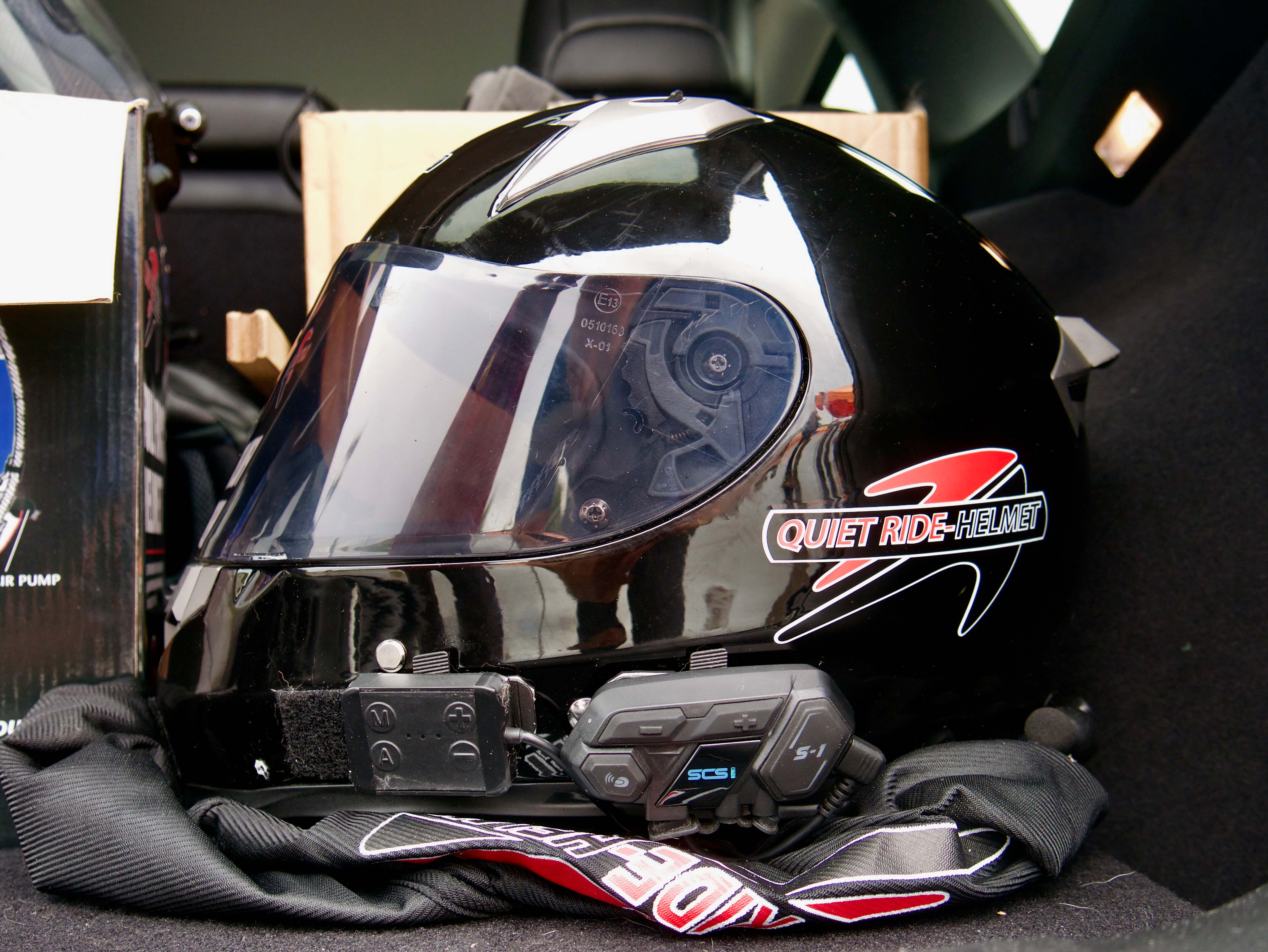
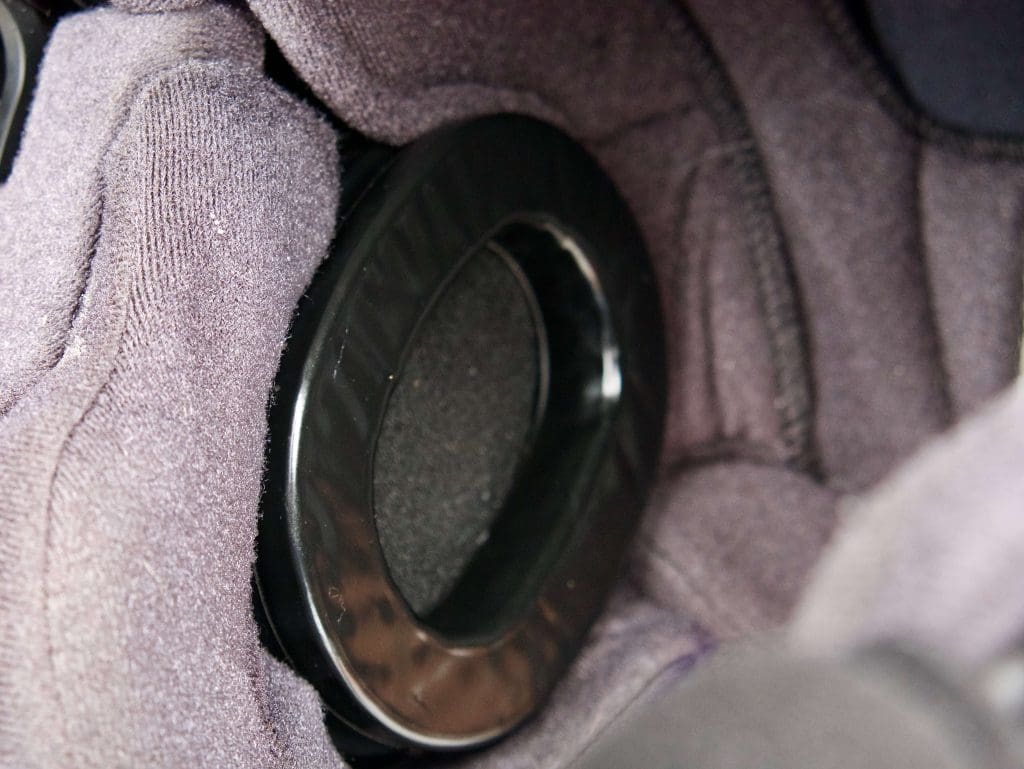
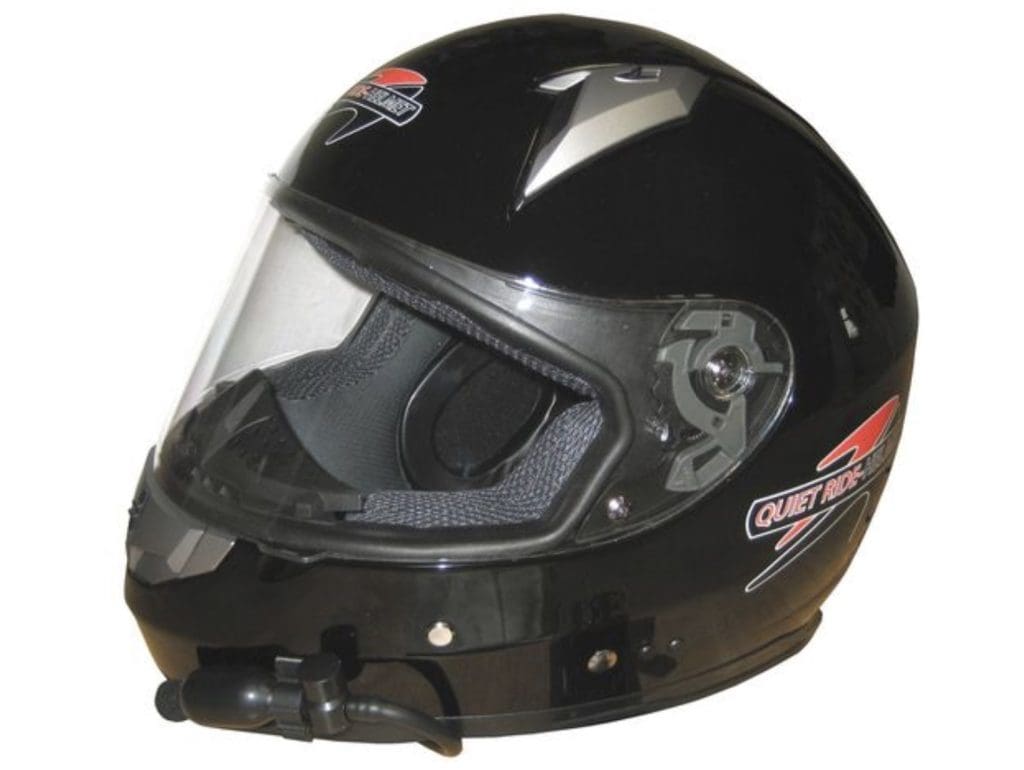

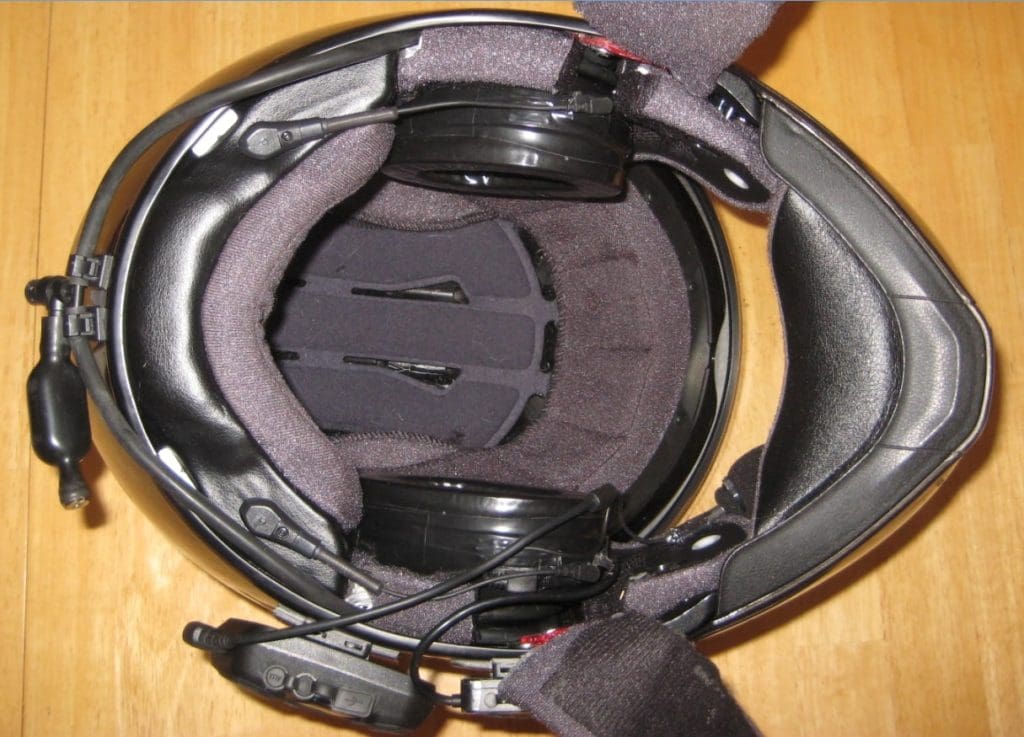
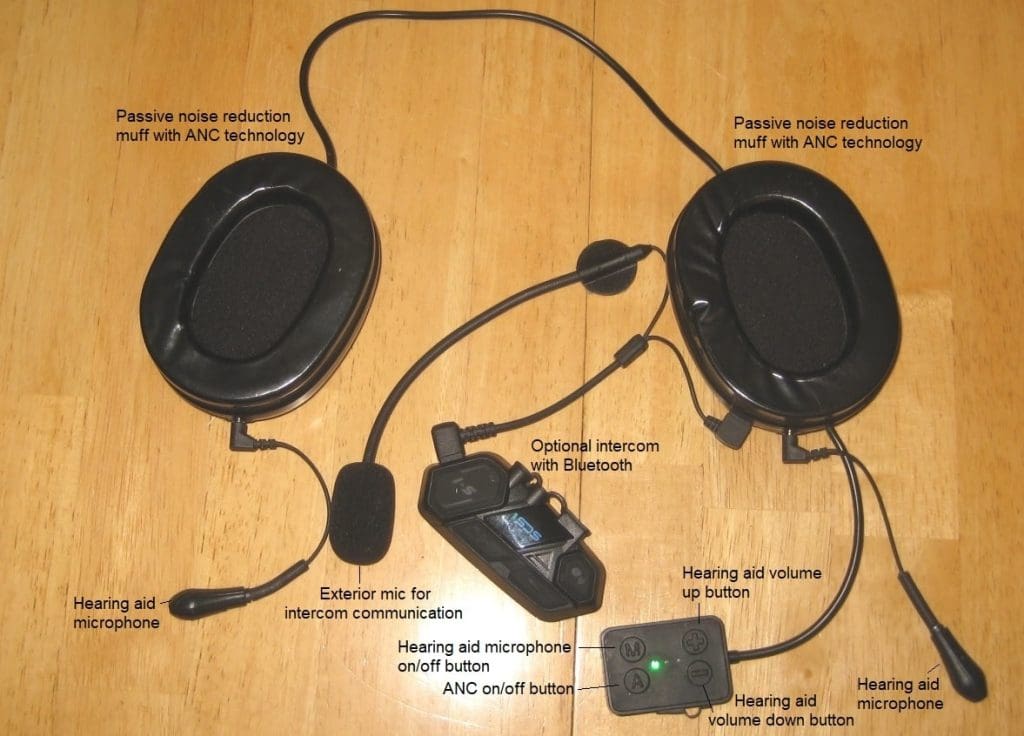
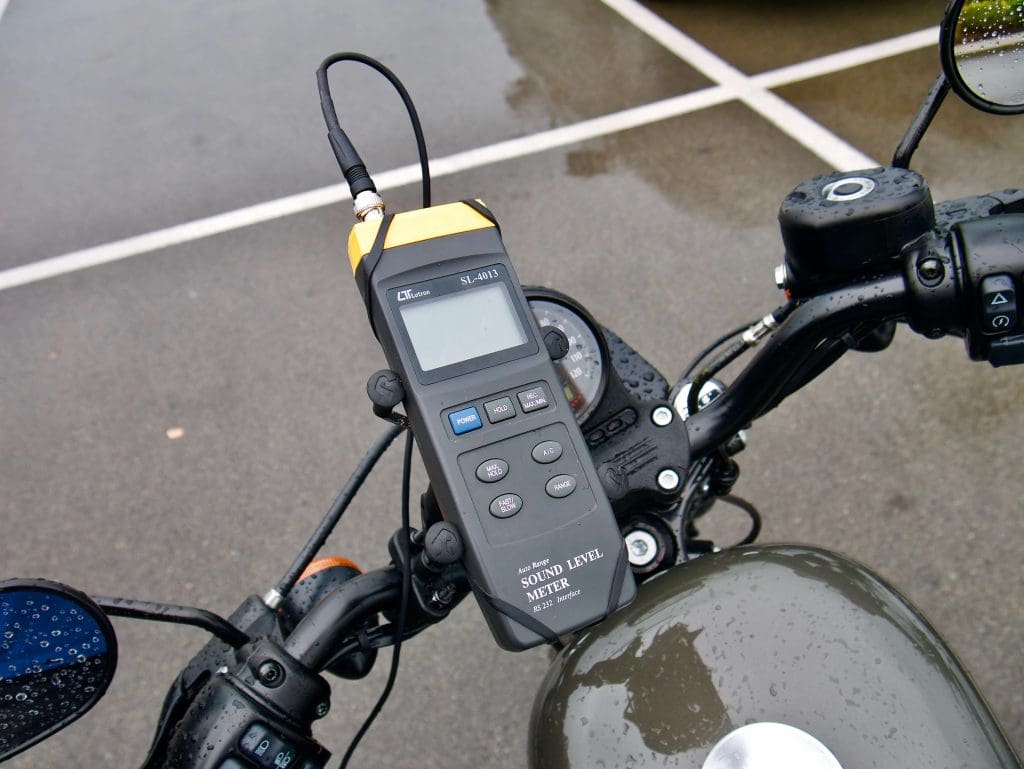
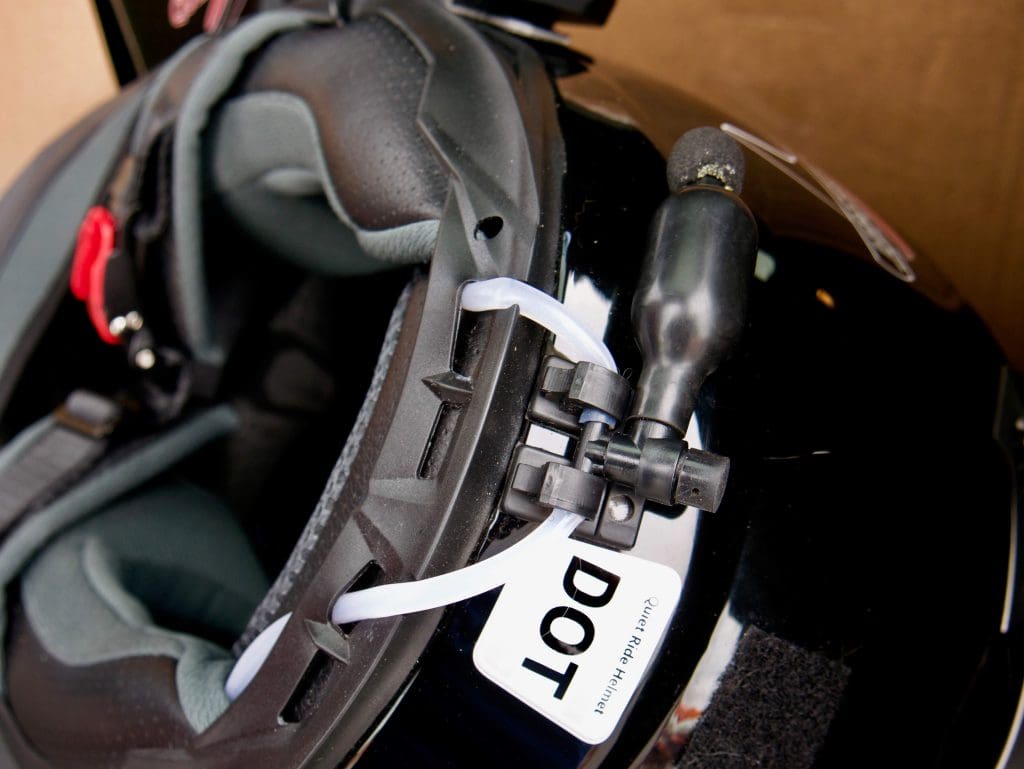
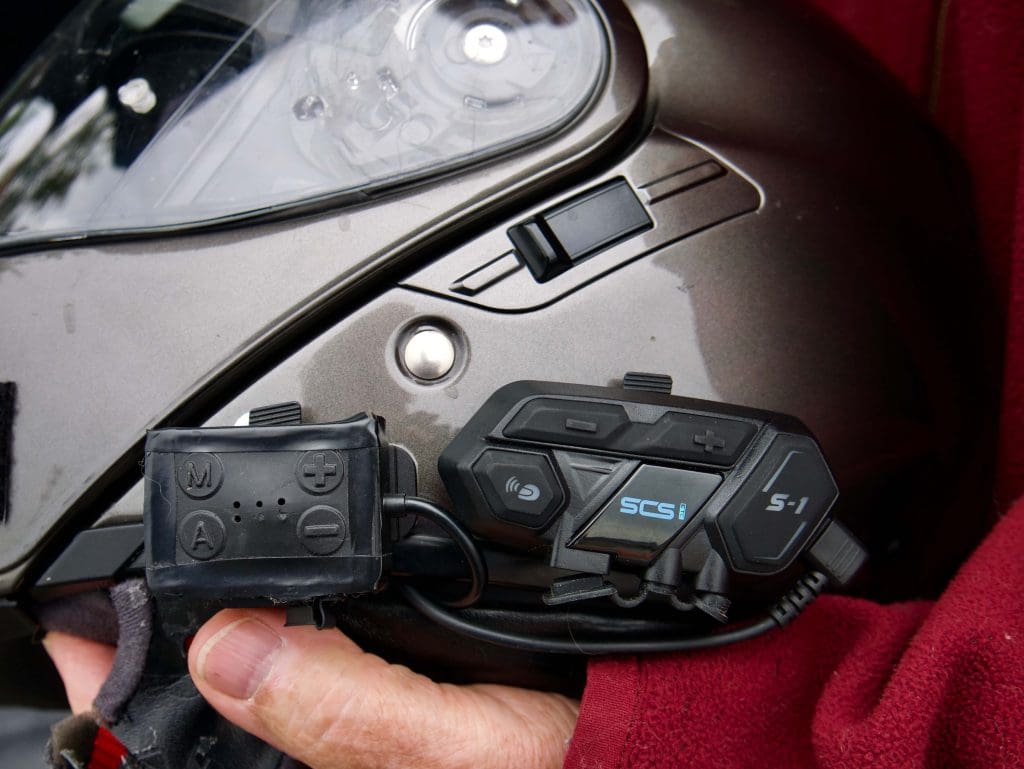

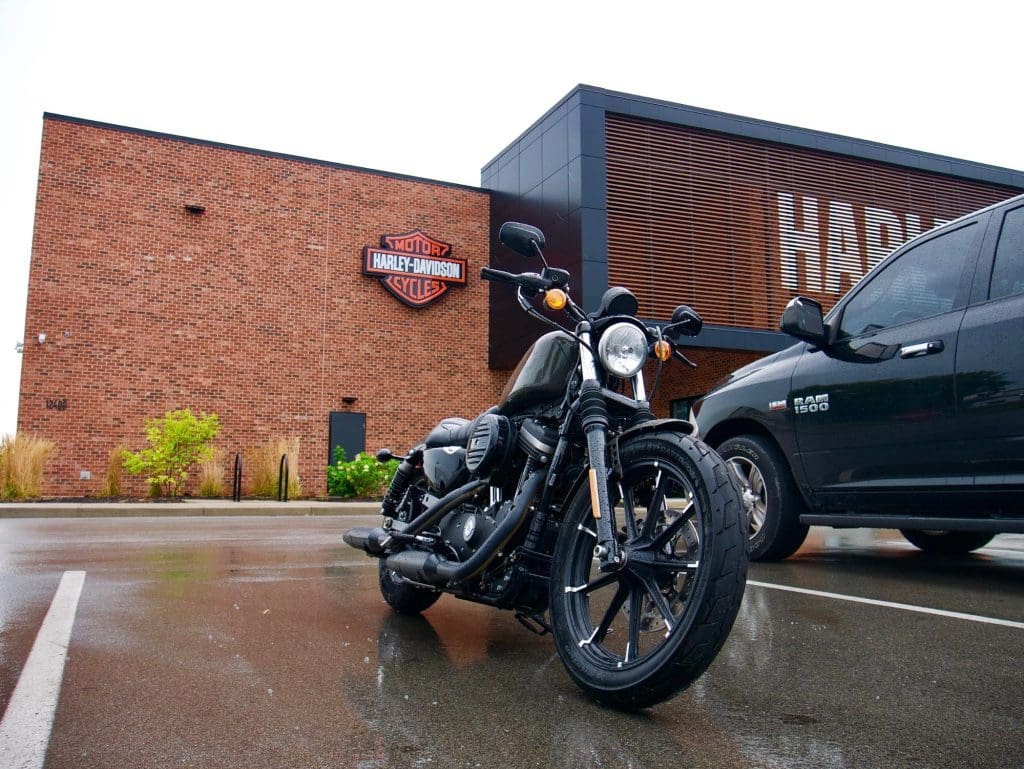


Interesting. To say I’m obsessed with reducing wind noise would a huge understatement. Since I started riding again in 2013 I’ve been obsessed about quiet helmets. I stumbled onto this guy’s helmet over three years ago, partly because I was desperately waiting everyday for Sena’s INC helmet to come out after having seen their prototype had ear muffs like this. It turns out, and I may be wrong about this since I’m going off old memory, that I assume that Sena couldn’t use ear muffs like this for their INC helmet because this guy has a patent on it. And it turned out that Sena’s helmet, without this style of ear muff was junk (I know, I bought and tried it). Sena’s helmet also seems to me to otherwise be a crappy $100 helmet (no Snell rating etc) so I was happy to unload it. While I appreciate a man’s ingenuity and obsession I really wish he’d either license this patent or just let guys like Shoei and others with a bigger budget use this tech for free. I know he talked on the phone to friend of mine and he said over three years ago he was working on noise cancellation… I guess this stuff just takes a really long time. IMO, this helmet with it’s bladder and all that stuff hanging off the side is just too ugly. I’d love it if he could use a system like Scorpion in which the pump isn’t hanging off the side. I guess I’m vain. He may say he’s still improving it but from what I can tell it looks exactly like it did 3 years ago. Just license this tech to Shoei or Schuberth or whomever please. 🙂 God knows they can afford to hire engineers to bring active noise cancelling and top notch Bluetooth comms to the highest level and make it look good while putting it into a Snell certified helmet.
Admittedly I forgot that it can be added to any helmet. After trying out over 30 helmets in the last six years I’ve found the Shoei GT-Air is simply in it’s own league in terms how quiet it is and I’d be curious to use this with it. For sure, I need to run my Sena BT unit in it for music and that it connects to my Sena SR10 for my radar detector. If I don’t end up liking the Jarvish X-AR I may look into adding these cups to my GT-Air.
FWIW, tried out S Plug earbuds and I suspect the experience was much like his helmet. It was just HEAVEN. So little wind noise and music and rider comms were unbelievable. To say it felt like sitting still in a quiet room listening to music and talking to friends isn’t overstating how awesome it was. It was so quiet I couldn’t turn down my Sena 20s enough so had to pull over to turn down my phone volume. Problem for me was over time the cable got tugged on from the neck roll and would eventually unseal the ear bud and was a deal-breaker. I know other people that use earbuds with success but I don’t understand how.
For me, dealing with wind noise and air bags (jackets or otherwise) are the last great frontiers in motorcycling. I’ve got everything else related to riding solved. Again, at least for me.
David, Al did tell me that he as reached out to many of the big helmet manufacturers. He’s interested in some kind of partnership with them or even selling the idea to them. My view is that it’s on Sena for not reaching out to him directly and seeing if he’d be interested in working with them. He is, and from what I understand would. It would make the Sena helmet what it should be. I actually agree with you that the stuff on the outside is pretty unsightly. I would like to see it better integrated into the helmet. I think Shoei, Sena, HJC or some other company should work with Al and see how they can refine his already impressive design.
This is a curious endeavour for sure. As a rider with 25+ years experience, I have tinnitus. Its not severe or debilitating but its there.
I recently bought a set of Sony Bluetooth headphones. They’ve impressed me so much, im trying to dismantle a second pair of Bluetooth noise cancelling headphones, so I can put them into my helmet! From my reading the Sonys’ are some of the best at active noise cancelling. I may not have the airbladder system as above, but there are other ways to cut down on wind noise too. Theres a neoprene cuff you can buy (sorry I can’t find a link) that helps to prevent noise ingress from the bottom.
If you can get them in there it’ll make a difference as Wade pointed out even a reduction of 10 decibels feels like much more to the wearer.
Have you tried out the new Cardo bluetooth systems like the packtalk? The newest ones have noise cancelling tech in them and I tried them out at AimExpo last year. It was shockingly good.
David,
Were you referring to the GT Air or GT Air II as the quietest helmet you have found? I wear a Shoei Qwest and wonder if either of the GT Air helmets are even quieter than the Qwest which I find is pretty quiet. I have to deal with Tinnitus and Hyperacusis, so constantly looking for the next best helmet.
I also get to have fun with tinnitus =/. I haven’t worn the Qwest so I can’t speak it to vs. the GT Air II, but I can say that the GT Air II is among the quietest helmets I’ve worn. Paired with a decent set of earplugs and you’ve got a great environment for quiet riding.
Cameron, If you get a chance to experience the noise reduction provided by passive noise reduction earmuffs that are installed in the Quiet Ride Helmets that are presently sold on line you will experience the noise level of the quietest helmet available to the public at this time. The helmet Wade tested was a prototype earmuff with active noise cancelling (ANC) electronics installed in the Quiet Ride original passive noise cancellation earmuffs. The noise reduction of the test helmet is on par with the noise reduction experienced when wearing aviation noise reduction headsets with active noise reduction technology used by airplane pilots to protect their hearing and allow them to communicate with airport towers. The total noise reduction of engine noise and wind noise wearing the test helmet is around 75% to 80% quieter than all other helmet models if have tested to date without noise reduction earmuffs installed in the helmet. ANC technology in passive earmuffs will be installed in 2nd generation earmuffs and will be available to the public in around 12 months. Most important, the technology eliminates the necessity of wearing earplugs to protect your hearing! If you or anyone else reading these comments wants to be contacted when upgrade 2nd generation Quiet Ride Helmet with ANC earmuffs will be available for purchase send me an email requesting to [email protected] and I will add you name and email address to a list of customers interested in purchasing a 2nd generation Quiet Ride Helmet when they are available.
Yes, the GT-Air, not the 2nd. Not sure if I wasn’t clear about how much of a helmet nut I am and you can bet your life I wouldn’t have out the “II”. As Alvin says below, I’d imagine his cups inside my GT-Air would be insanely quiet. As it is now I just can’t deal with the combination aesthetics and potential for catching on something in a crash. On my GT-Air I run the Sena 10U which is all internal. Alvin, I can’t speak for everyone but if I could get your ear cups in an Arai or my GT-Air helmet WITH bluetooth comms and all internal, I’d pay plenty of money for that. I’d easily pay $400 for a kit that, bringing the total cost of my GT-Air plus your cups and bluetooth to $800.
Indeed. If Shoei offered their same helmets but had this as sort of an option I’d probably pay well over $100 more for it. You might say if a Shoei helmet costs me $500, if this is as awesome as it sounds I’d pay $700. So, if he could license it for something like $100 to $200 a helmet and they came through with a great design I’d be a buyer for sure. 🙂 As usual, after re-reading my post, I realize I didn’t give this guy the props he deserves. Well done sir and I truly appreciate someone with passion and engineering expertise tackling this issue. Thanks Al!
David, The prototype active noise cancelling earmuff cups were 3D printed ABS plastic cups which are more pores than the final version earmuff cups that will be injection mold ABS cups. The same design ABS injection mold earmuffs will reduce sound levels inside earmuff by an additional 5 decibels versus prototype active noise cancelling earmuffs due to increase in density of ABS plastic injection mold material. A 5 decibel decrease in sound level in final version injection mold earmuff cup will translate into an additional 25% drop in sound level at ears.
Thanks for chiming in here Al. Will the noise canceling kit be available to install into other helmets? Putting all this sound reduction into something like the Arai DT-X would be like a dream come true for me. And yes, another 5 db would be huge. If my not yet here Jarvish X-AR doesn’t cut it I’ll be tracking you down to see what options are available.
Wade,
If what you say about these helmets is true (and I do believe you), what about all the stuff hanging on the outside of the helmet ? Aren’t they a potential safety hazard in the event of a get off ? Until results like this can be obtained without extra stuff hanging on the outside of a helmet, I’ll continue to use foam ear plugs with my Arai Quantum-X.
Hi Quentin,
I recently visited the Snell testing facility and spoke to Ed Becker about this question.
He said that having components clamped to the outside of a helmet could snag in a slide situation which would worsen injury. Even some integrated Bluetooth items might in a hard impact transfer more force to the wearer.
He wouldn’t say it would 100% increase the odds of injury but it sounds like it would.
To be fair Al’s helmets still passed DOT standards so that degree of protection is there.
What I mean by “passed DOT standards” is that Alvin actually went to the trouble of putting the helmets through the actual DOT testing as opposed to just self certifying them as many manufacturers do.
Before I say anything about the helmet, I would like to say congratulations to your webpage. It’s the only webpage dealing with motorbike accessories in the way that you do.
I am a sound engineer, and as you understand noise is a major factor for my hearing health. At the same time I’m a keen motorbiker. The issue with noise in the helmet, is something that interests me since years back. I have changed more than 40 helmets in my life and I always had the concern about their noise.
This helmet that you’ve tested, seems like a breath of fresh air. The helmets industry hasn’t changed a lot during the last 15 years. I was always curious to understand why we haven’t seen such technology implemented in the modern helmets. Lately we see intercom systems that are really working when transmitting and receiving signals, but nobody talks or cares about the quality of sound and the noise. This is a major factor of a satisfying and healthy experience when somebody rides a bike.
I hope that we will see more products like this in mass production, as also major manufacturers putting effort to introduce new ideas on noise cancellation.
Takis, the prototype active noise cancellation earmuffs tested by Wade included a quality headphone sound system comparable to Bose or Sennheiser, Beats and many other headphone sound systems. Because sound levels in earmuffs when traveling at highway speeds has be reduced by 75 to 80% the communication quality is clear and crisp and easy to hear at 65 mph for the first time without turning volume up to dangerous to hearing levels that will damage hearing. If you are into listening to music while cruising you will appreciate the headphone sound quality coming from quiet environment inside noise reduction muffs.
You’re selling me on one Al. I like my music on the go to be clear.
Are you willing to do installs in helmets yet if people send them to you?
Thanks Takis!
It fills me with satisfaction every time I hear someone say that our site and reviews are worth the time to read them. That’s our goal here. We don’t make much money doing this stuff… yet… but we hope someday to quit our day jobs and do these reviews full time. Imagine what we could do in that case, eh?
Alvin is working hard to get a major helmet company to take the technology and patents off his hands, but so far they haven’t bit down on it. If potential customers like yourself approach them directly and urge them to do so, perhaps they may take a chance on the Quiet Ride system.
Cheers!
It’s interesting. I wonder how it feels to wear it. I currently am using custom fitted hearing protection+comm system from Big Ear and they actually work for me. If given the chance to try this first I’m considering getting one.
Great post – and timely – I just returned from a 2,000-mile, 6-day round trip on my motorcycle and reducing wind noise was by far the greatest struggle I encountered. I used foam earplugs & plugfones (each has a 27ish NRR), as well as a headband to cover my ears from actual air/wind, but still struggled with tinnitus on longer days. Would have loved to be able to use a system like this.
Josh, if we still have a full face helmet in your size you can purchase a helmet with passive noise reduction earmuffs which will reduce sound levels around 15 decibels. If you install plugfones in ear canal before installing helmet with noise reduction muffs you will have the quietest set up possible. You could also buy an earmuff kit off my other website quietridemuffs.com and install noise reduction muffs in your own helmet plus plugfones to have the ultimate set up for protecting hearing on a long trips.
Hello, I am a reader from Turkey.
I am a new rider. I am having to learn a lot of things.
How does the Quiet Ride helmets compare in regards to safety to the other high end helmets?
Hi Octave!
The Quiet Ride helmet is DOT certified, but not ECE so you wouldn’t be able to use it in Turkey.
Wow, amazing! I also love different helmets for the bike.
When I flew helicopters in the Army our flight helmet had the same type of ear muff with a small speaker in each muff. The noise reduction was awesome and we could fly with the side doors open on the Huey.
I always wondered why this was never tried with motorcycle helmets.
Hey Stephen, I figured pilots used some kind of similar system. Very cool to hear from someone with first-hand knowledge.
TO: Alvin Halfaker.
When will the active noise canceling product be ready?
Great article. I solved this myself. Yesterday I took some soft fur ear muffs made for home theater headphones. You can buy generic replacement headphone pads. The ones I had at home are a very soft felt material which is not the norm. But you can get them on Amazon for probably $12. Then I just put ear plugs in, put my helmet fully on. Then I slipped the soft felt ear muffs up into the helmet and around my ears. I found that I was able to slip the 3/4″ thick headphone pads ear muffs up into the sides of the helmet with my fingers. Removing can be done the same way in reverse without taking the helmet off. Results! Holy cow! The ear muffs reduce sound on top of the normal inner plugs by about 50%. The normal wind resonance and heavy bass sounds inside the cavity of the helmet from the slight open space around the foam inner ear plugs is completely deadened. It’s so quiet it is scary at first. I think anyone can do this. Buy some replacement Sony headphone ear pads. Experiment with different material and different sizes. I just happened to have ones that are the perfect size. They go all the way over my ear but they are oval shaped and don’t take up much space in the helmet. Round pads might not fit properly. Look for oblong shaped pads.
How do these work (or do they work?) with prescription glasses or sun glasses, i.e. they must press on the glasses temples thus adding pressure to your face/temples; also I would think that they would not seal as efficiently, surely a big improvement just the same. I was mostly thinking about the ear cup seal pressing on the glasses temples thus every time that your helmet gets buffeted or bounced it would jar your vision. I get some of this anyway with a well fitting (snug) helmet. Love the whole idea and looking forward to any feed back.
John
Hi John, I would imagine that glasses would disrupt the cups around the ears. I bet they would still help with road noise, but not nearly as much. Also, your glasses would likely get bounced around a little with wind buffeting. It’s a great solution, but certainly not perfect if you wear glasses.
Quinn Helmets has some really interesting communication technology going on now. Pairing with noise cancelling sounds like the best of both worlds.
I’ve owned the Quiet Ride for about 2 years or so. The upgraded speakers are excellent. I already have severe hearing loss, so the combination of protection and high quality sound is great. I’ll ride both with and without additional earplugs. As stated in the article, too much air in the ear muffs doesn’t block that much additional sound, and the pressure can be uncomfortable. About 8 pumps is plenty. Mine will slowly leak down, but the air bladder is easy to get to and has never been a problem. I’ll definitely buy the ANC system when it comes out. These helmets are a great value and Alvin is fantastic to work with. A small business with big customer service in my experience. I’m a very satisfied customer with several helmets. The Quiet Ride is a great value. Thanks Alvin!
My tinnitus got bad and I considered quitting riding. Instead, I took my Bose QC-15 ANC earcups and put them into my dual sport helmet. what a difference. With earplugs and the ANC earcups, I think I can keep riding, at least in one hour or less intervals. I don’t know what the dbs are, but the ANC just completely removes the engine noise. I ride mostly on dirt at lower speed so wind noise is not an issue. I am not convinced that vibration is still not somehow damaging my ear nerves and making my hearing loss/tinnitus worse, but I do think that ANC eliminates most of the damaging sound frequencies. As far as getting the earcups into the helmet, some cutting of padding and inner helmet was required. ( I want to thank Al Halfaker for chatting with me and I hope he gets a deal with a major manufacturer. )
Hello guys I hope you’re well I really like what you guys all doing I am a professional wrestler and I would like to fit your system in one of the Reese helmets which is F.I.M certified for racing because we can only race with certified racing helmets that have the F.I.M certificate stamp on them. Please can i send u a helmet for you guys to work out .. I really need you help looking forward for your reply